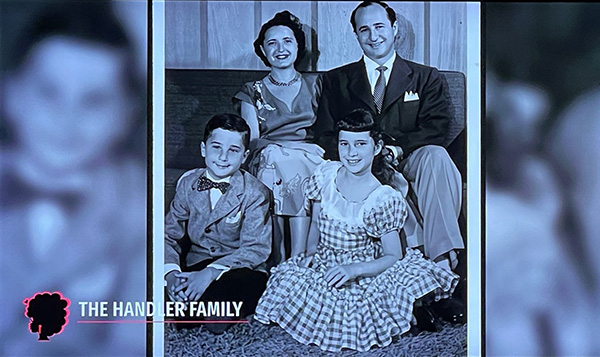Barbie
Leftists ruin everything. Nothing, not even children’s toys, is immune from their hateful ideology. A case in point is Greta Gerwig’s Barbie. There are countless women who played with Barbie dolls as children, put them aside when they grew up, and occasionally think nostalgically about them without ever suspecting that they were the targets of Leftist consciousness-raising. But from the very start, Barbie sets them straight.
Barbie begins with a voiceover that sounds like a witch speaking. In the bad old days, little girls only played with baby dolls, which their cunning parents foisted on them to brainwash them into wanting to become mothers. It was soooo boring.
Then, to the opening strains of Richard Strauss’ Also sprach Zarathustra, a monolith appears above the primitive little girls, exciting them to an orgy of baby doll smashing. Smashing baby dolls is in questionable taste. It smacks of killing babies in effigy. I guess Roe v. Wade really died hard for the Sisterhood.
The monolith is Barbie, first introduced in 1959. Barbie changed everything. Instead of playing mothers, little girls began playing Barbie. Who was Barbie? Barbie is an emancipated single woman with lots of clothes and other accessories that you can buy for her, including a boyfriend named Ken. But Ken and Barbie don’t marry and have kids. They don’t even have genitalia. As the movie points out, Barbie once had a pregnant friend, but that doll was discontinued. Thus, Barbie does not prepare women for motherhood, but spinsterhood.
Barbie and Ken were initially archetypal Nordics living the California dream, when California used to be synonymous with blond surfers rather than tech geeks with wretched physiques.
But then the kvetching began. Ugly people are a huge burden on society. Not only do they ugly the place up, they also resent their betters and want to tear them down. Moreover, they wish to overthrow the standards of beauty by which they are judged inferior.
Whites, especially Nordics, have long been the focus of the lusts and resentments of the darker, less comely races. And beautiful whites have been lusted after and resented by the fat and ugly of all races. As America becomes more miscegenated and non-white, the rising tide of ugliness threatens to wash away all standards. Thus, Barbie and Ken have become the symbols of everything loathed by the Left’s bio-Leninist coalition: feminists, the fat and the ugly, Jews and other non-whites, etc.
Barbie and Ken have been accused of making brunettes feel bad for not being blonde (as if the world does not contain countless hot brunettes). They have been accused of making ugly people feel bad by being too damn beautiful. They have been accused of making fat people sad by being lanky and fit. And they have been accused of making non-whites feel inferior by being archetypal good-looking whites. It would really set these people off if Ken and Barbie were capable of producing blonde plastic babies.
Barbie’s manufacturer responded to the Leftist hate coalition in two ways. First, they diversified Barbie. Barbie can now be every shade of black and brown, as well as ugly and fat. Second, they marketed Barbie as a feminist icon. It wasn’t a stretch; after all, she was a childless, materialistic, single career girl. Barbie, I am sure, started out as an innocent children’s toy. But she has been retconned into a Leftist psyop by a giant corporation. Capitalism has simply learned how to coopt and commodify Leftism.
This cynical marketing strategy is hilariously parodied in the movie as “Barbieland,” where every woman is Barbie, Barbie comes in all colors and sizes, and every Barbie leads a perfect life. Every sort of diversity is represented. There’s a gay ally doll named Allan, and the black President Barbie is obviously a transsexual or drag queen. Come to think of it, a lot of the Barbies look like drag queens.
Barbies do everything. They run the government. They run the industries. They award one another prizes. We are even asked to believe that they risk breaking a nail as sanitation and construction workers.
What about the Kens? They do nothing. They are just accessories. As far as Barbie knows, they don’t even have houses. They just hang around on the beach.
But Barbie (played by Margot Robbie) and Ken (played by Ryan Gosling) are just not happy as perpetual adolescents in a post-historical consumerist utopia. Barbie has thoughts about death, and she’s beginning to age. Ken, moreover, is not happy being in the friend zone forever.
At this point, I was beginning to think that Barbie could become a great subversive film exploring how feminism and the sexual revolution have failed worse than Communism, producing a world in which more people than ever are lonely and incapable of forming friendships, relationships, and families. I wondered if we would meet Benzodiazepine Barbie and selective serotonin reuptake inhibitor (SSRI) Barbie, as well as Nihilist Shitposter Ken.

You can buy Trevor Lynch’s Classics of Right-Wing Cinema here.
I was really hoping the movie would end with these two archetypal Nordics leaving behind their empty materialism, growing some genitals, and starting a family. Since Barbie and Ken are literally the only white, non-dysgenic couple in the whole film, the future of the white face hinges on the production of the Margot Robbie-Ryan Gosling miracle baby. But, of course, Tinseltown will go to any lengths to prevent that from happening.
Barbie seeks advice from Cynical Wine Aunt Barbie, known in the movie as “Weird Barbie.” Naturally, she gives bad advice. Weird Barbie blames her problems on society. Specifically, she says that she became weird because a little girl in the real world “played too hard” with her, whatever that means. Weird Barbie suggests that Barbie’s problems may have the same origins. So Barbie sets off for the real world, and Ken joins her by stowing away.
Ken and Barbie arrive in Los Angeles, one of the most politically correct cities on the planet, which is depicted as a dystopia of sexism and patriarchy. It is not, however, depicted for the dystopia it really is: overrun by Third Worlders, junkies, and beggars.
Barbie is dismayed by the patriarchy, but Ken is entranced. He’s never felt affirmed and respected as a man. The depiction of bro-culture is genuinely appealing, which is highly subversive. Ken decides that power, responsibility, and horses are the answers to his malaise. He thus decides to bring the patriarchy back to Barbieland. The Barbies immediately knock off the career girl stuff and become dutiful Stepford Girlfriends to the Kens. Everyone is much happier with the new order.
Meanwhile, Barbie meets the source of her discontent: a middle-aged Latina with visible black ancestry who looks like Alexandria Ocasio-Cortez. She has a weak, bumbling white husband and a sneering tween daughter who spouts woke drivel. The Barbie returns to Barbieland with the two Latinas, where they are horrified to discover Ken’s patriarchy. The Barbies have obviously been brainwashed. Honestly, I don’t think a woman on the planet could say no to Gosling’s Ken. He’s an amazingly charismatic actor and makes a lot of this dumb role. Sadly, a lot of people hate him for that.
Naturally, Barbie and the Latinas work to overturn the patriarchy. AOC easily snaps the Barbies out of their brainwashing with feminist duckspeak. The Barbies then conspire to get the Kens fighting with one another (“Let’s you and him fight.”), and while the Kens are distracted, the Barbies overthrow the patriarchy. The Kens go along with it, because they literally don’t have the balls to say no.
As the movie ends, the woke inclusiveness is being laid on pretty thick. Make way for Ordinary Barbie, Pantsuit Barbie, Menopausal Barbie, and Cankles Barbie.
Thus, for a brief moment, the Kens wonder if maybe they, too, might have some affirmation in the new order. But justice and consistency are not Barbie’s strong suits — any Barbie’s strong suits — so no.
At that point, I sensed that some men in the audience were on the brink of taking up lead pipes and clubbing Barbies like baby seals. (Hey, they’re only plastic, like the baby dolls at the beginning.)
Barbie finally tells Ken that she just doesn’t want him, further proving this film was written by feminists. Then, in an excruciating scene in which Rhea Perlman plays Barbie’s Jewish creator (((of course!))), Barbie becomes human, then moves to the real world (if you can call Los Angeles the real world). We soon learn what Barbie’s newly-found humanity entails when she walks into a gynecologist’s office. Barbie has a vagina now, but something tells me that she’ll still end up as sterile as her plastic sisters.
And that, dear reader, is the happy ending.
Barbie is one of the most cynically-marketed movies I have ever seen. The bait consists of Robbie and Gosling, who bring in people with Nordic sex appeal — which the whole movie then conspires to destroy.
The bait also consists of enough striking images and bits of song and dance routines (did I mention Barbie is a musical?) to convince people that this is a wholesome, nostalgic comedy — only to deliver shrill, woke tirades and cringe-inducing jokes about masturbation and genitalia.
The very existence of the Barbie doll is an example of how capitalism monetizes nihilism and social decline by selling dolls to little girls that make them less likely to have little girls of their own. That’s no way to run a society.
Barbie has an evil message, but fortunately, this movie is dumb, draggy, and obnoxious, so it is unlikely to poison many innocent minds. Indeed, because it is so crassly anti-white and anti-male, it might accidentally red pill more people than it harms. In fact, I am betting the Manosphere will be mining this movie for memes long after the Sisterhood has forgotten it.
* * *
Counter-Currents has extended special privileges to those who donate $120 or more per year.
- First, donor comments will appear immediately instead of waiting in a moderation queue. (People who abuse this privilege will lose it.)
- Second, donors will have immediate access to all Counter-Currents posts. Non-donors will find that one post a day, five posts a week will be behind a “Paywall” and will be available to the general public after 30 days.
- Third, Paywall members have the ability to edit their comments.
- Fourth, Paywall members can “commission” a yearly article from Counter-Currents. Just send a question that you’d like to have discussed to [email protected]. (Obviously, the topics must be suitable to Counter-Currents and its broader project, as well as the interests and expertise of our writers.)
To get full access to all content behind the paywall, sign up here:
Paywall Gift Subscriptions
 If you are already behind the paywall and want to share the benefits, Counter-Currents also offers paywall gift subscriptions. We need just five things from you:
If you are already behind the paywall and want to share the benefits, Counter-Currents also offers paywall gift subscriptions. We need just five things from you:
- your payment
- the recipient’s name
- the recipient’s email address
- your name
- your email address
To register, just fill out this form and we will walk you through the payment and registration process. There are a number of different payment options.




